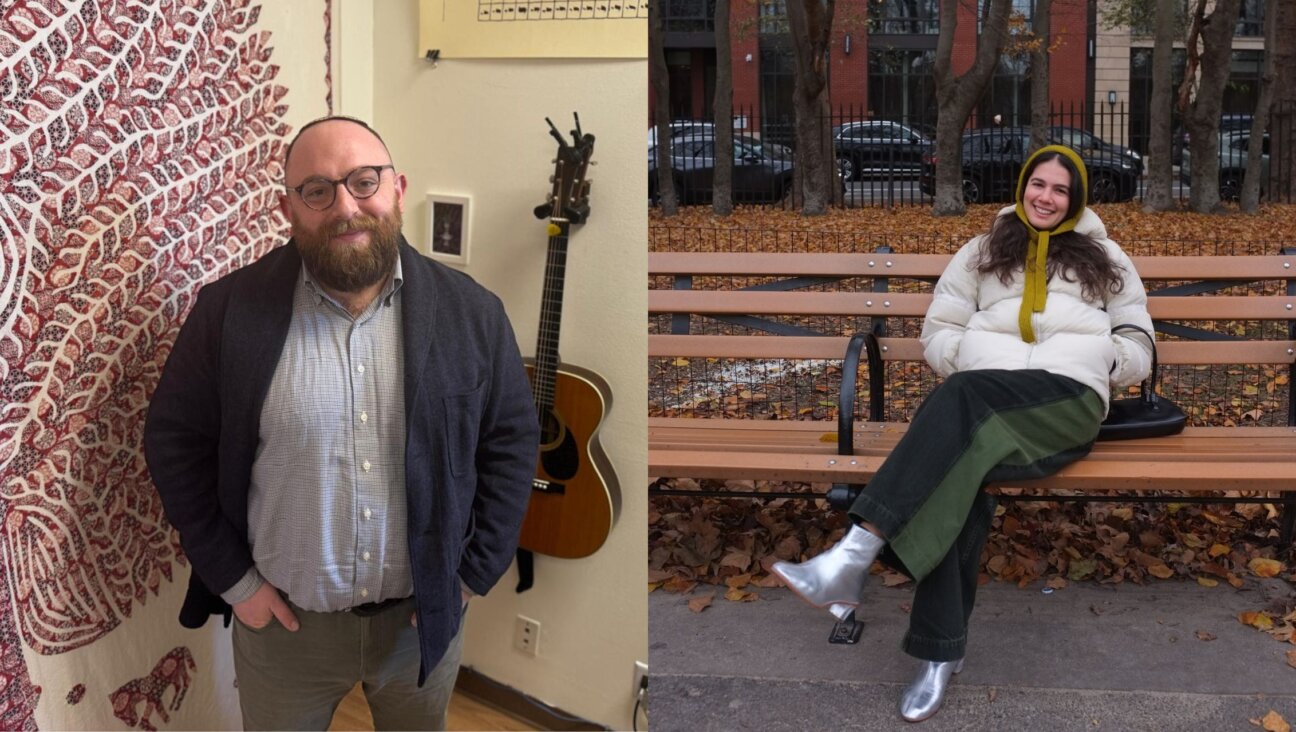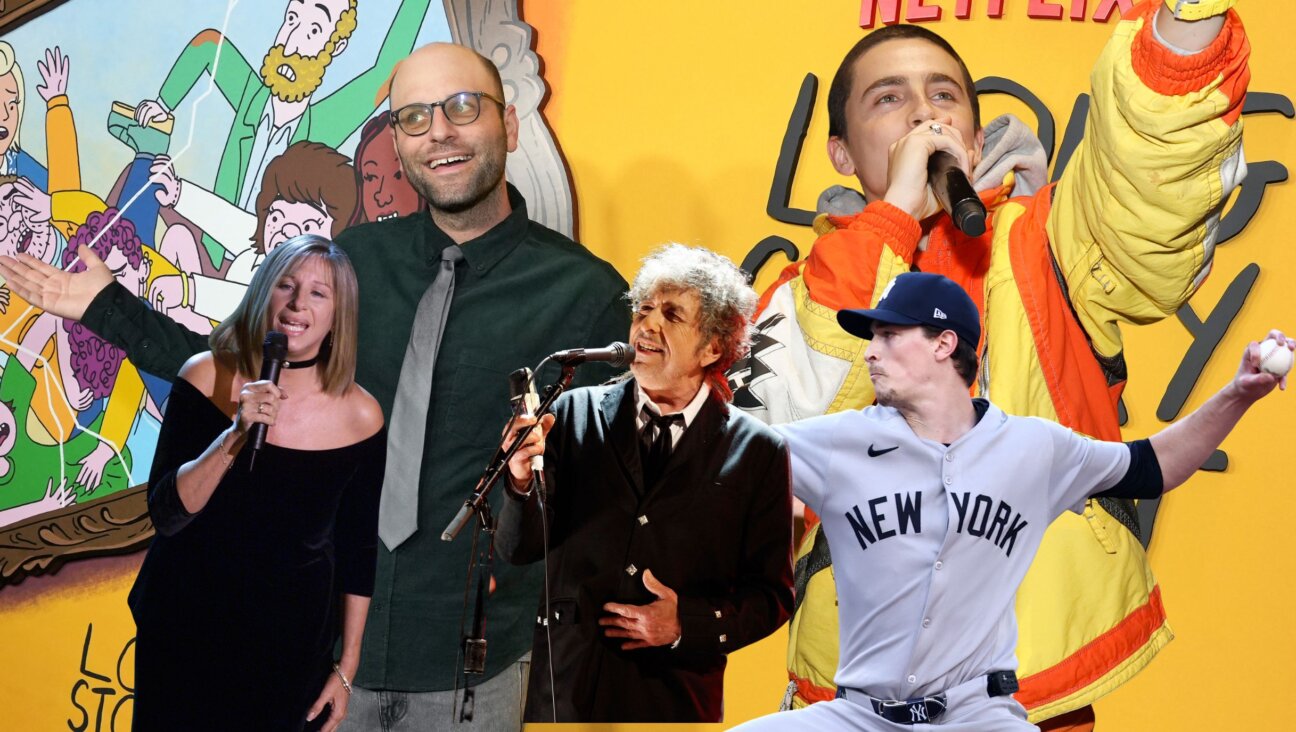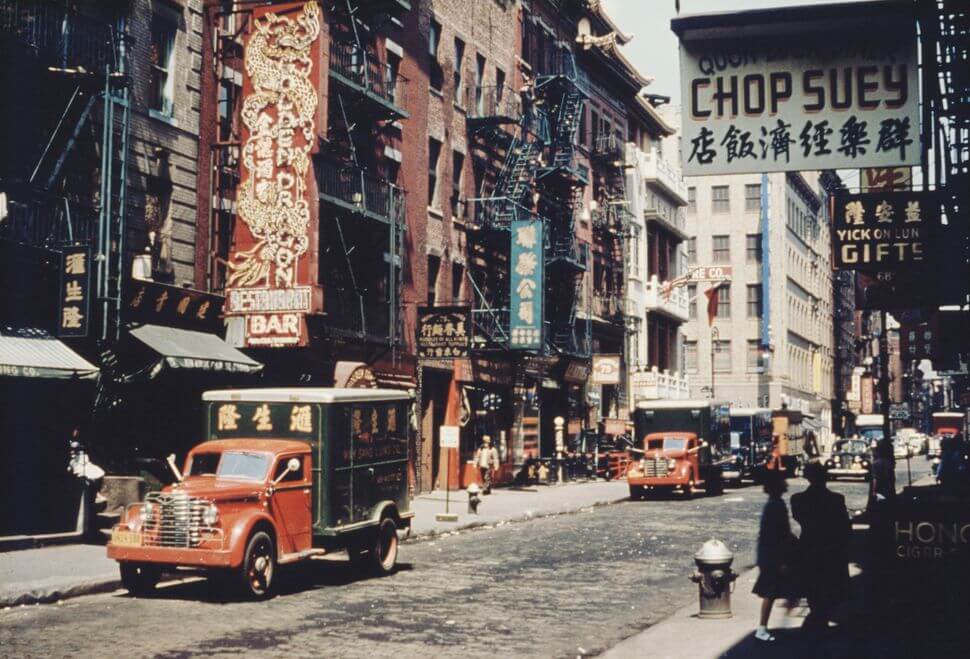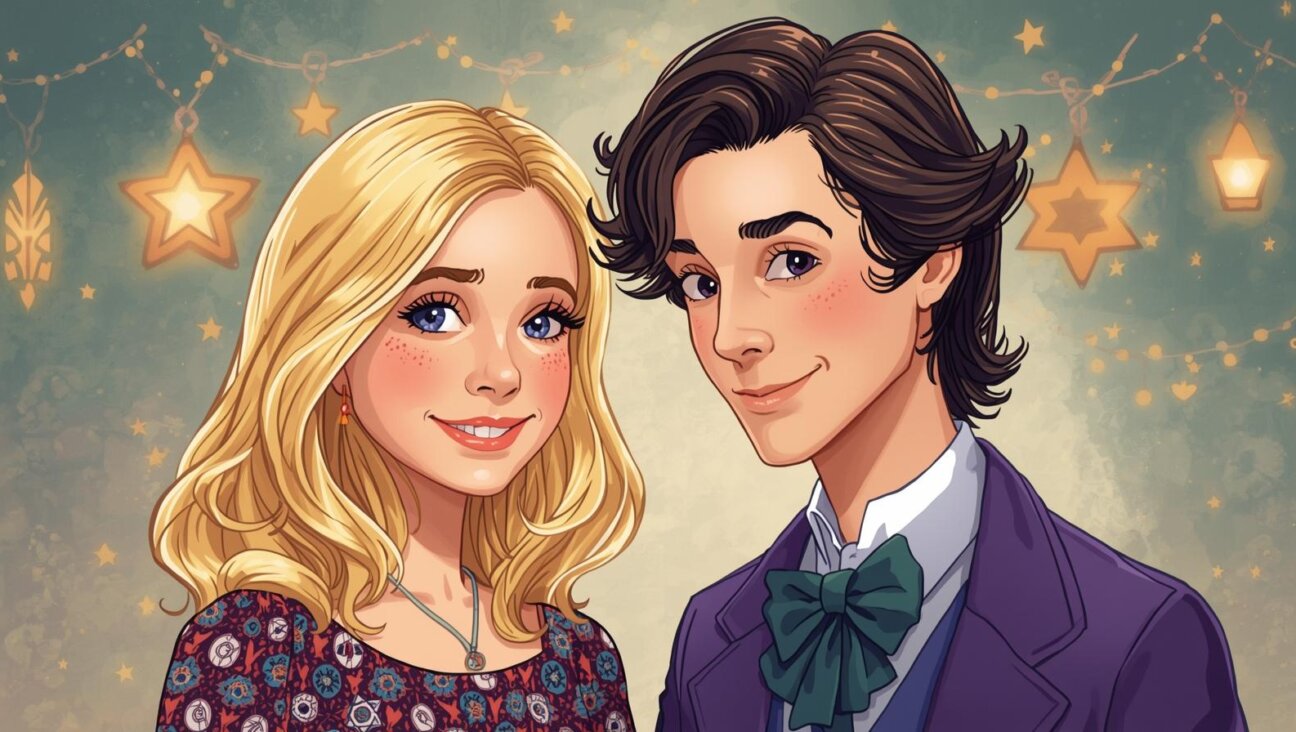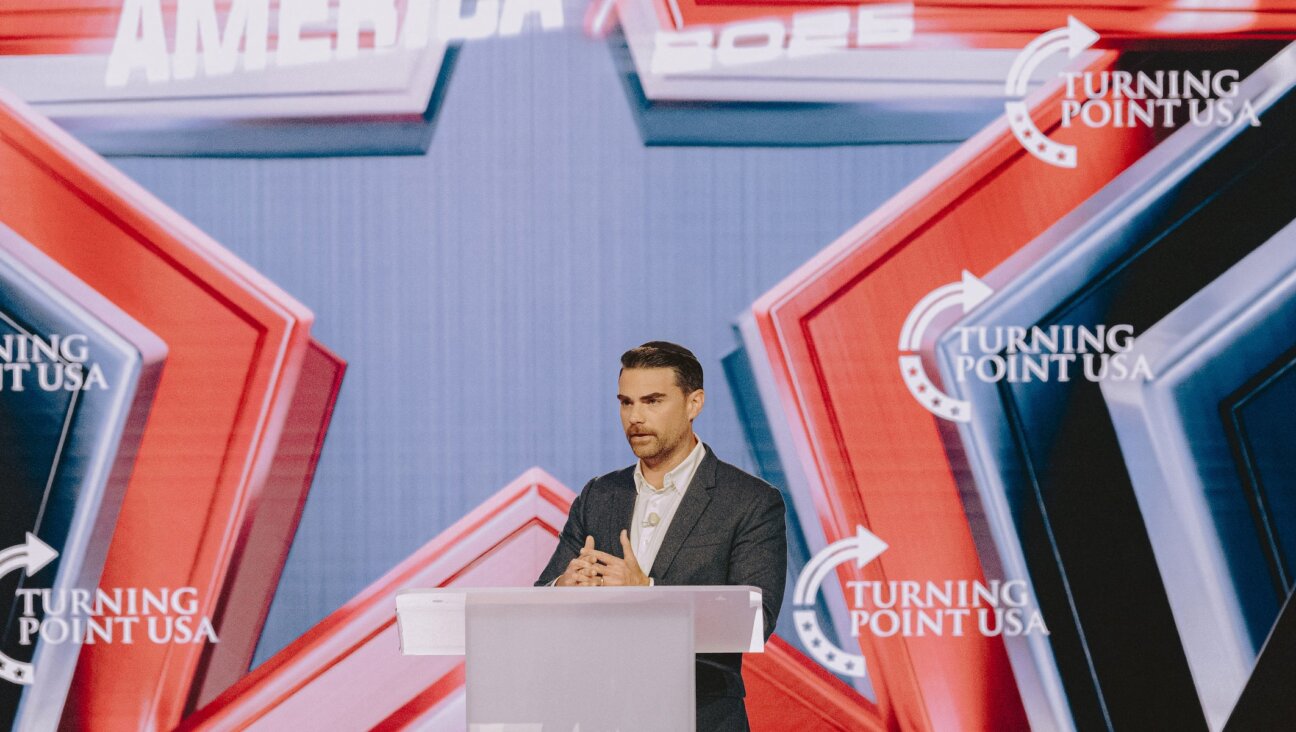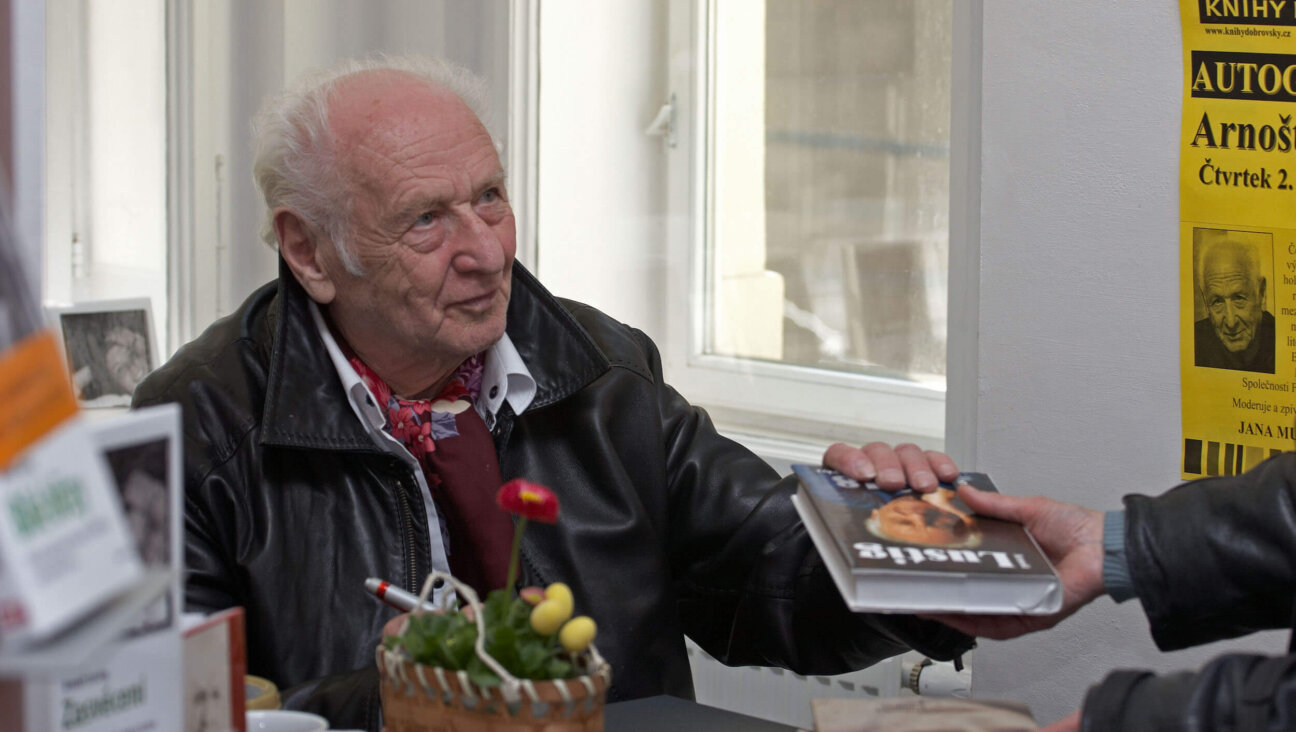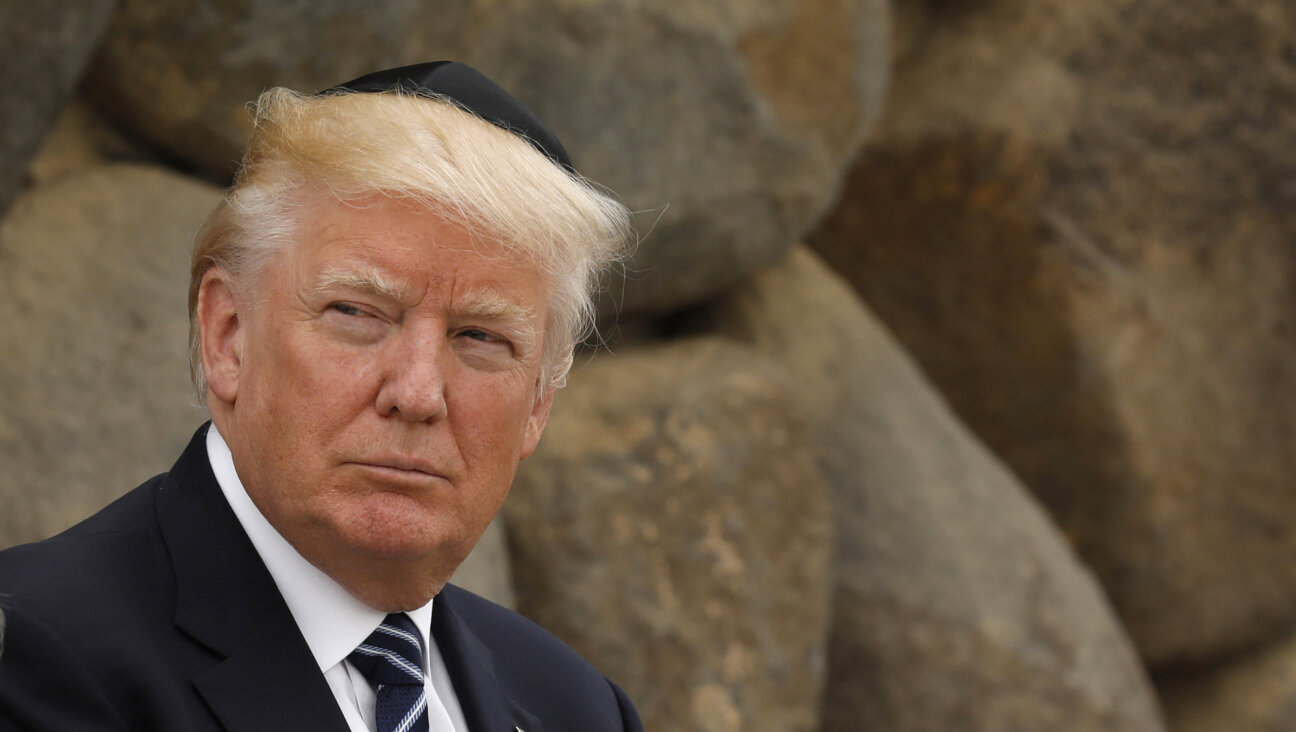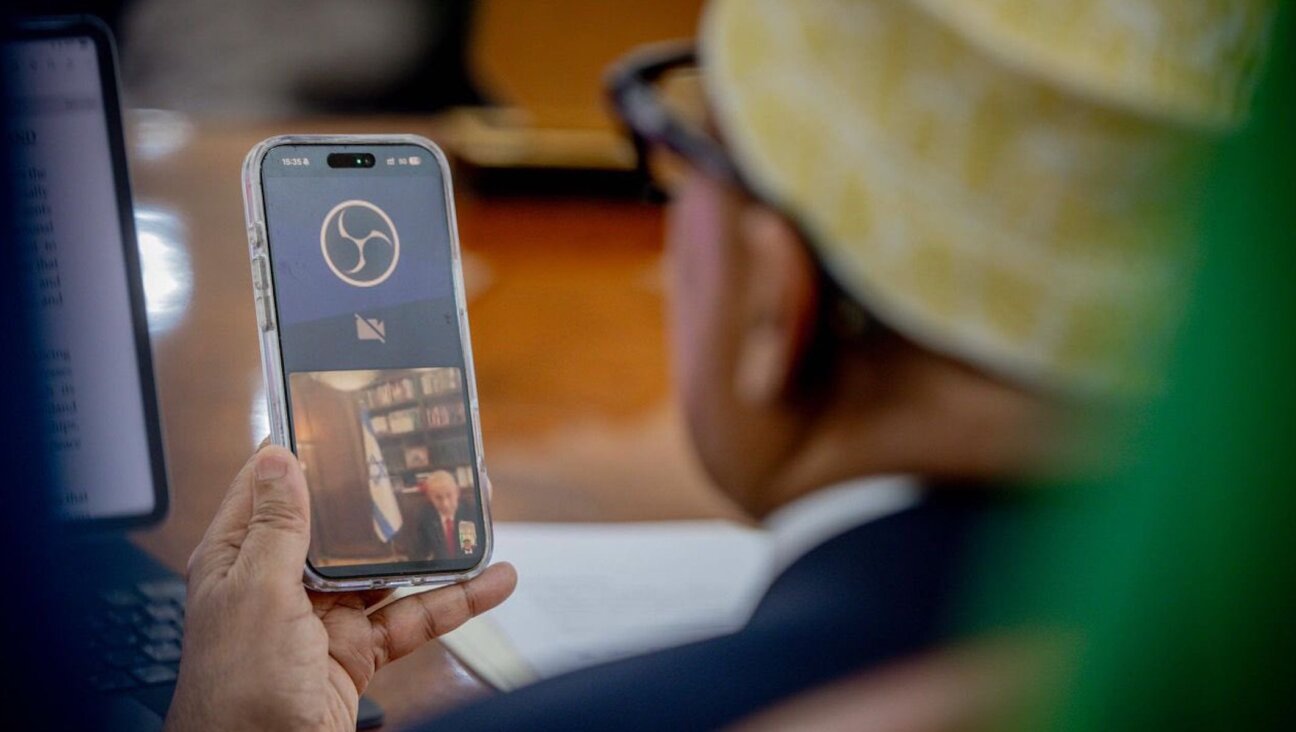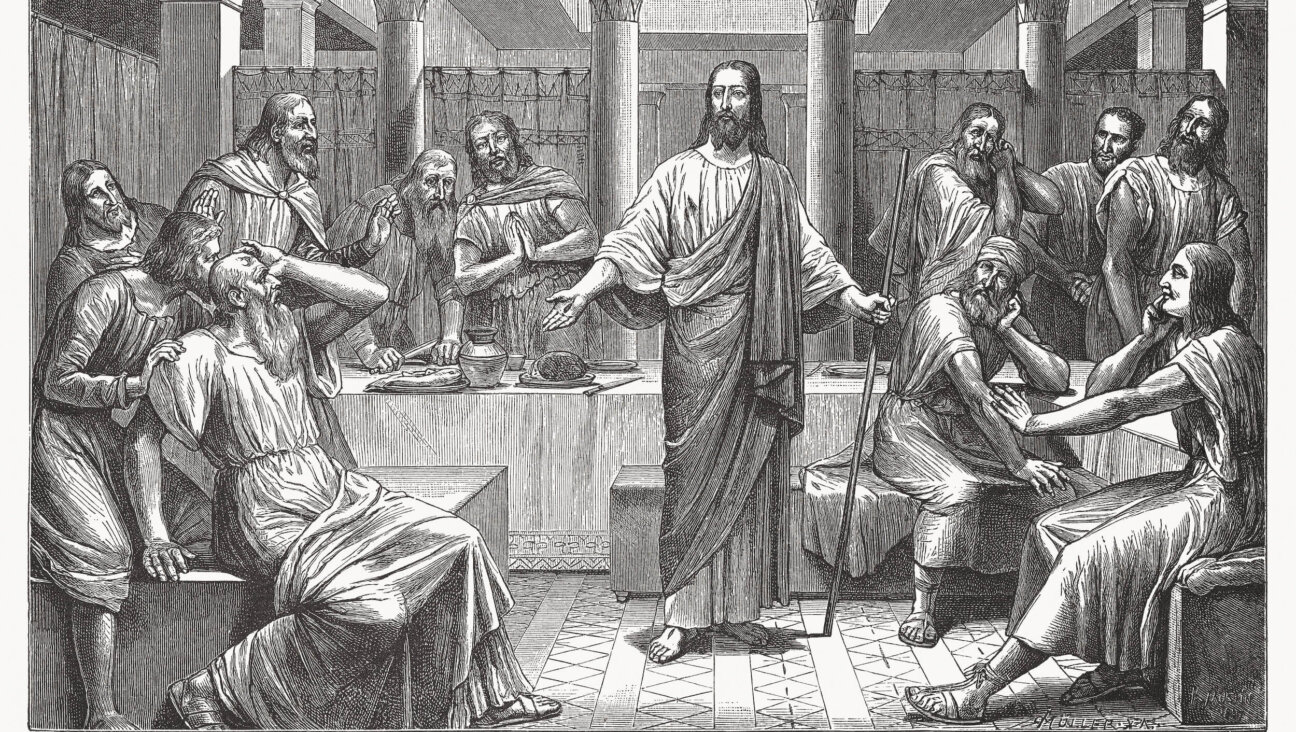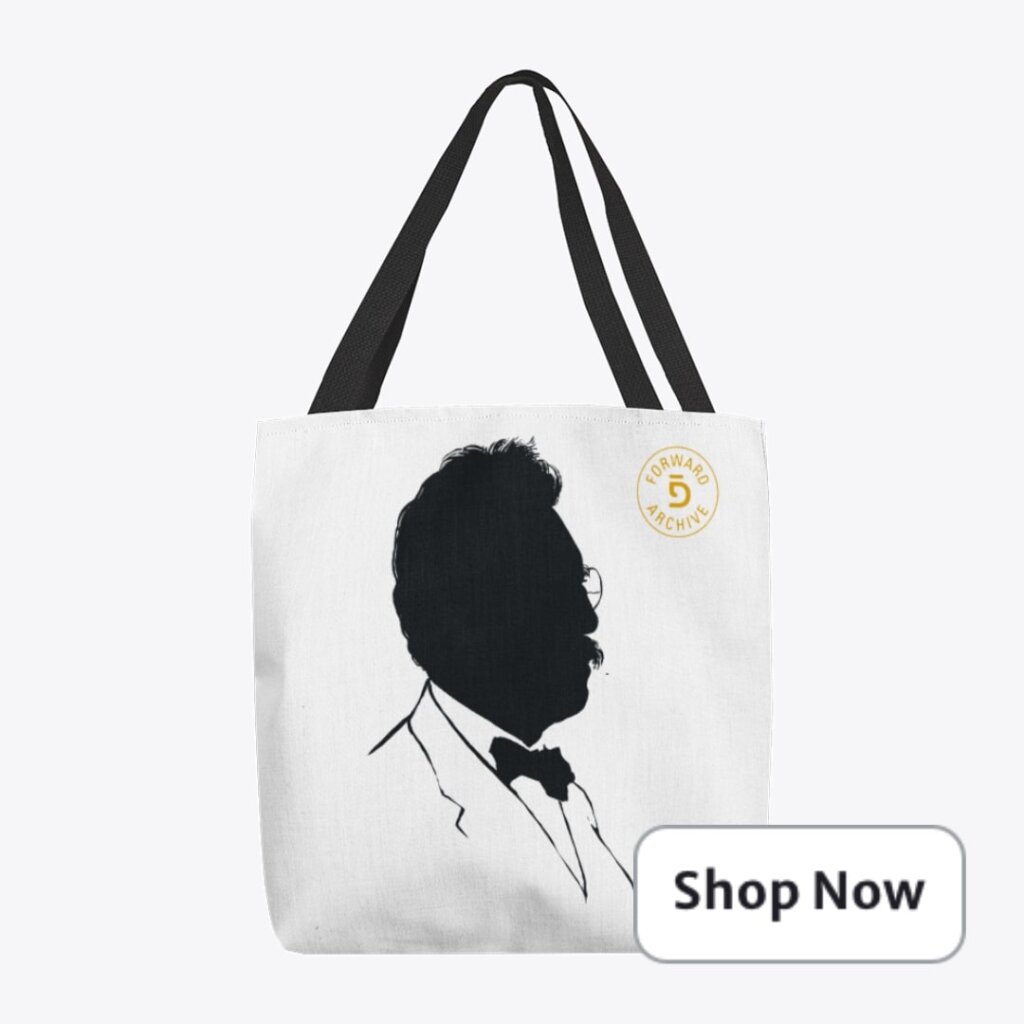One was born Catholic, another was a West Virginia Protestant — now they’re all making Jewish art
A compelling new exhibit focuses on artists who converted to Judaism
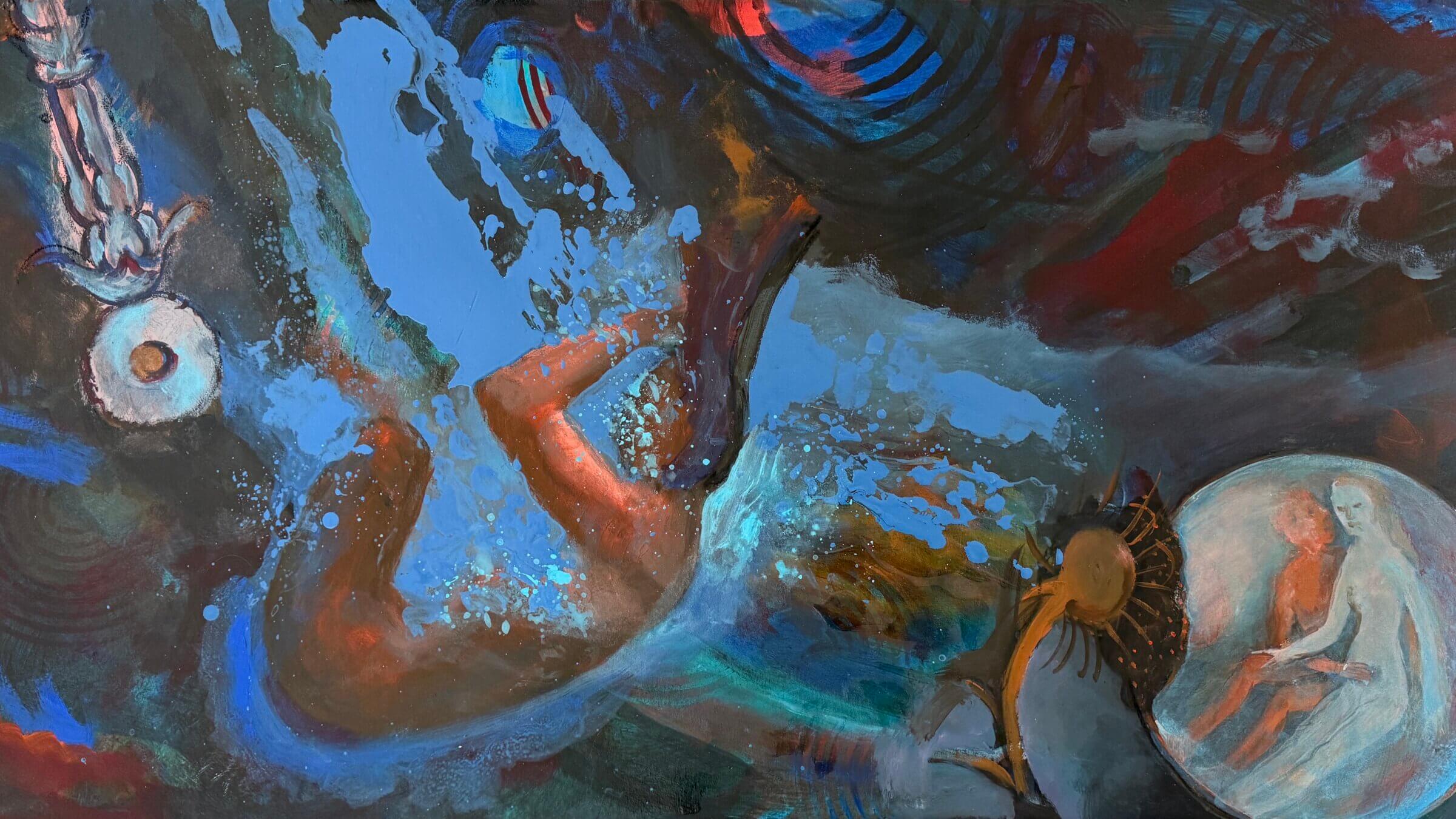
‘Immersion VIII,’ by Yona Verwer. Image by Yona Verwer
In artist Yona Verwer’s “Immersion VIII,” a nude woman in a fetal position floats in a swirl of water. The image is at once ethereal and surreal, not unlike Verwer’s first mikveh experience, a purification ritual, and central to conversion, the transition from non-Jew to Jew.
“It is the joy of weightlessness and the feeling of being spiritually elevated,” said Verwer, the co-founder of the Jewish Art Salon, who was born Catholic in the Netherlands and converted to Judaism in 1995.
“Five years after my conversion I started including Jewish subject matter in my paintings, that is to say contemporary visual interpretations of ancient texts,” she added. “I also examine contemporary themes like identity, ecology, antisemitism and more through a Jewish lens.”
“Immersion VIII” is one of 17 works in an original and perhaps unprecedented exhibit, “Children of Ruth: Artists Choosing Judaism,” currently running at the Heller Museum at Hebrew Union College. The thought provoking display features the paintings, drawings, collages, found objects and sculptures created by artists who have discovered a home through conversion. Some of the pieces are abstract, others representational and still others combinations thereof or not readily definable at all. None of it is kitschy, reductive or derivative.
Hailing from across the globe and representing an array of ethnic, social and religious backgrounds, all the artists have forged work informed by various aspects of their conversions. There is commentary on biblical texts, illustrations of Jewish rituals and others that merge imagery from the artists’ early backgrounds with representations of and metaphors for Judaism and Jewish life. In more than a few pieces, the Golem — the ultimate outlier who is nevertheless the mystical protector of the Jewish people — makes an appearance.
“I wanted to be Jewish from the time I was 11 despite knowing almost nothing about Judaism, and not meeting a Jew until I was 19,” Verwer said. “It felt irrational, but later, the Lubavitcher Rebbe’s words resonated — that sincere converts to Judaism possess an inherent Jewish soul, even prior to their formal conversion. In other words, converts are not outsiders but returning kin.”
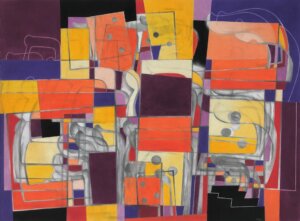
The reasons for the artists’ conversions run the gamut. Kate Hendrickson grew up in West Virginia, the child of Protestants. Her mother was a choral director and organist and her father sang in the choir in both Presbyterian and Methodist churches. Neither parent was doctrinaire in their beliefs.
“I couldn’t buy Christian dogma at all or the idea that Jesus was the savior,” she said. “I married a Sephardic Jew who was raised in Morocco. His family embraced me, especially his mother. I used to follow her around in the kitchen, studying her recipes. When she died at 97, I felt ungrounded and wanted to explore Judaism. The rabbi suggested I do independent study and I attended services. Still, I wondered when I would become Jewish. A friend, another convert, said that she just woke up one morning and knew she was a Jew. The rabbi said, ‘Anytime will be a good time for you.’ I love Judaism because it feels so open-ended. It feels like home.”
In “Concealed Faith,” Hendrickson’s first series of post-conversion drawings, Hebrew letters, which are an integral part of her Cubist designs, are concealed. In the series that followed, “Faith Revealed,” Hebrew letters are even more central to the aesthetic and more clearly visible, at least to the attuned eye. Further, Hebrew letters inform the way she creates her art.
Hendrickson translates the title of each work into Hebrew, then creates cut-outs of each Hebrew letter.
“I rub graphite over the cut-outs and then randomly drop them onto my paper and rub them across the drawing, their edges and curves serving as structures for the composition.”
A number of the artists said Judaism appealed to them because of its openness to interpretation and reinterpretation, adding how much they valued the chance to express unexpected or even controversial viewpoints in their imagery.
Artist Mike Cockrill, a social justice advocate who has studied Torah for two decades, puts forth a feminist vision in his piece, “Excavation,” which reinvents Judaism’s patriarchal tradition.
Here, two women, posed in a manner that hints at Egyptian forms, are engaged in a metaphorical excavation. One holds a book, while the other, paintbrush in hand “is ready to repaint, rewrite, the traditional history from which she may have been excluded or been misrepresented,” he said. “Patriarchy lies at the women’s feet in the form of a blindfolded and disembodied head.”
Before Cockrill’s formal conversion, many of his paintings embodied an Americana vernacular, at times a tad mocking. During his Torah study period, his paintings made a radical shift, embracing an aesthetic that addressed the human condition, “the existential man, the meaning of life, which is funny but also dark,” he said.
“The rabbi who converted me was concerned that conversion would affect my painting in a negative way, that I would be doing Jewish kitsch,” he recalled. “I want to embrace my Judaism without pandering or being obvious and corny.”
Other artists combine ethnic or cultural elements of their pre- and post- conversion lives. Carol Man forged a design that couples Hebrew and Chinese calligraphy. Vicky Vogl, the daughter of an Ecuadorian mother and Czechoslovakian Jewish father, created an exquisitely detailed puppet theater depicting a Golem in a setting that also embraces a Latino aesthetic.
“The clock has Hebrew letters and the hands move counterclockwise,” she said. “The colors and craftsmanship are Ecuadorian and European.”
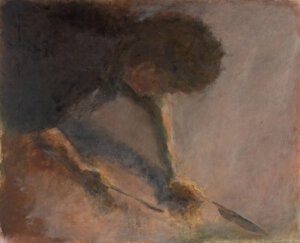
The genesis of this exhibit was almost a fluke. Curator Nancy Mantell recalled that at an earlier exhibit about the Passover Haggadah, one artist revealed that she was Norwegian, had converted to Judaism, and was working on a textile project based on Torah portions. “We were so impressed by her commitment to her Jewish learning it made us start thinking, ‘Wow, are there other artists who have joined the Jewish people and have Jewish themes in their art?’” Mantell recorded.
She and Susan Picker, the assistant curator, put out a request for submissions. Throughout the process of choosing submissions, Picker says she was taken with the artists’ “love of Judaism and a sense of return to their deepest souls, with a love of grappling with Jewish texts.”
Alan Hobscheid, who grew up in Chicago, the son of a lapsed Catholic father and Japanese mother, became exposed to Judaism in college through friends and later married a Jewish woman. To some degree his conversion was expedient and, simultaneously, an expression of osmosis, he admitted. But, also, he stressed he always had a curiosity about Judaism.
As a convert he was especially drawn to the way that “Judaism doesn’t sugar coat or obfuscate God’s relationship to man,” he said. “The doubt and skepticism spoke to me. So does the duality in many of the customs, such as the cleaning up and preparation for Passover. It’s very serious, but there are fun elements.”
Still, in his oil painting, “Bedikat Chametz,” the literal darkness of that pre-Pesach ritual especially spoke to him. The painting portrays a man on the floor in a darkened space, scrounging around, searching for the last bits of leavened bread in order to dispose of it.
“It’s not despairing at all,” said Hobscheid. “There’s a beauty in it and conversion is a similar process. You must leave something behind in order to move on to something else.”
“Children of Ruth” runs through Feb. 26 at the Heller Museum at Hebrew Union College.
